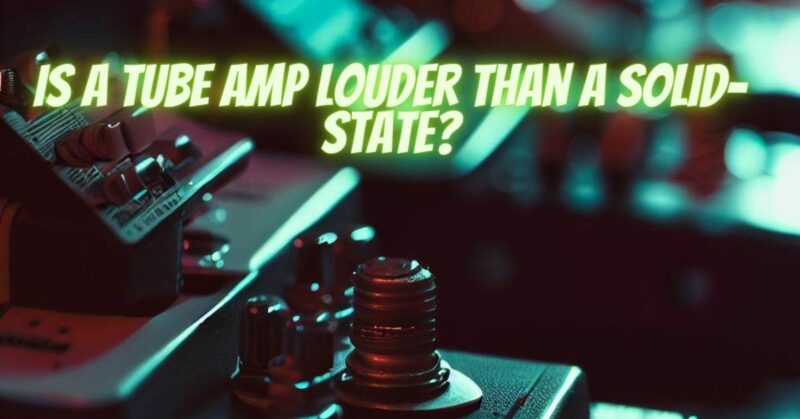The ongoing debate between tube amplifiers (tube amps) and solid-state amplifiers (solid-state amps) encompasses various aspects of sound reproduction, and one contentious point often revolves around volume. A common belief is that tube amps are inherently louder than solid-state amps. In this article, we aim to unravel the myths surrounding this perception, exploring the factors that contribute to volume levels in both amplifier types and shedding light on the nuanced reality of tube amp versus solid-state amp volume.
- Understanding Amplifier Basics: Tube amps and solid-state amps are two distinct types of amplifiers with different internal components and operating principles. Tube amps use vacuum tubes (valves) to amplify the signal, while solid-state amps utilize semiconductor devices such as transistors.
- Power Ratings: Both tube and solid-state amplifiers come with power ratings measured in watts. The power rating indicates the amplifier’s ability to deliver sound at a certain volume level. It’s crucial to note that, on paper, a higher-wattage amplifier is capable of producing more volume.
- Tube Amps: The Misconception: One prevailing misconception is that tube amps are inherently louder than solid-state amps. In reality, the wattage alone does not dictate volume perception. Tube amps often exhibit a unique harmonic distortion when driven hard, which can make them sound louder or more “present” to the human ear even at lower wattages.
- Headroom and Distortion: Headroom, the ability of an amplifier to handle dynamic peaks without distortion, plays a significant role in volume perception. While solid-state amps typically have greater headroom, tube amps tend to clip or distort more gracefully when pushed to their limits, introducing harmonically rich overtones that may be perceived as louder.
- Efficiency Differences: The efficiency of power transfer in amplifiers can vary between tube and solid-state designs. Solid-state amps are often more efficient in converting electrical energy into sound, meaning they can achieve higher volume levels with less power. Tube amps may need more wattage to reach similar volume levels due to differences in efficiency.
- Speaker Matching: The interaction between an amplifier and its connected speakers is crucial. Different speakers have different sensitivities and impedance ratings, influencing how an amplifier’s power is translated into audible sound. The matching of speakers to amplifiers can significantly impact the perceived volume.
- Tonal Characteristics: Beyond volume, the tonal characteristics of tube and solid-state amps contribute to the overall listening experience. Some argue that the harmonic richness and warmth of tube amps make them subjectively sound louder, even at lower volumes.
- The Role of Perception: Human perception plays a vital role in how we interpret volume. Factors such as harmonic content, distortion characteristics, and tonal balance influence how we perceive loudness. A well-designed tube amp with pleasing distortion characteristics can create the perception of being louder, even at lower wattages.
In the tube amp versus solid-state amp debate, the notion that tube amps are inherently louder is a nuanced myth. While wattage is a crucial factor in determining volume capability, the design, efficiency, harmonic distortion characteristics, and speaker matching all play pivotal roles in shaping the perceived loudness of an amplifier. Ultimately, the choice between tube and solid-state amplifiers should be based on individual preferences in tone, rather than a presumed difference in loudness. The journey to finding the ideal amplifier is a subjective adventure, where both types offer unique sonic signatures that cater to diverse tastes in the world of audio.


